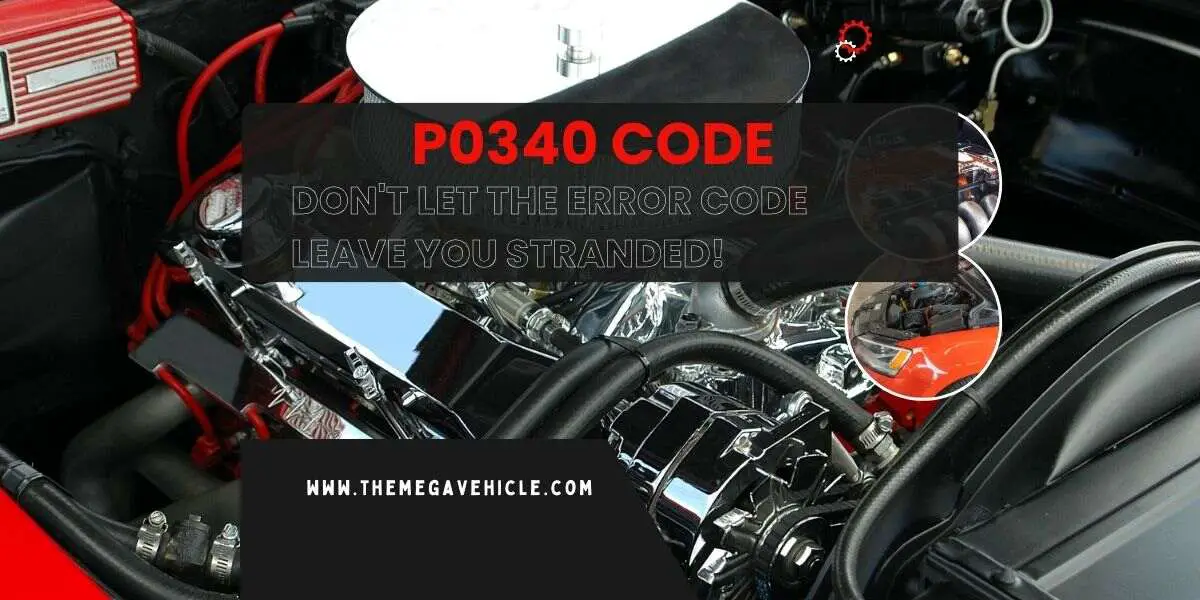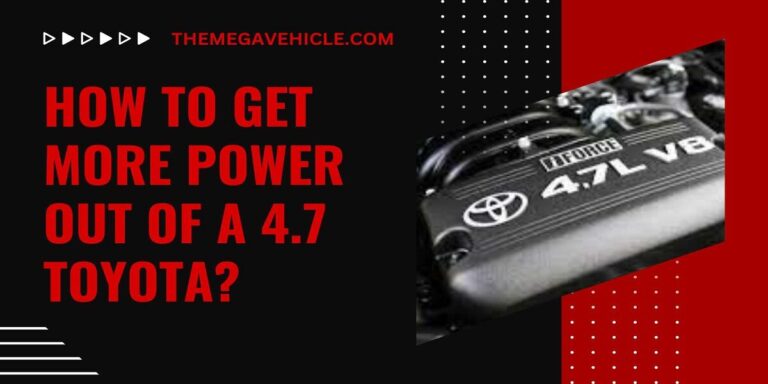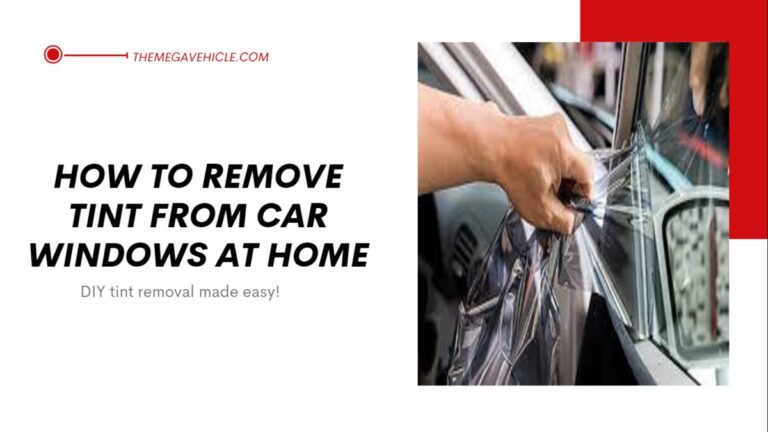P0340 Code: Symptoms, Causes, and Repair Guide for Your Car

Ever heard your car sputter and cough, throwing up a cryptic “Check Engine” light on the dashboard? The culprit might be the P0340 code, a hidden message from your car’s engine revealing a malfunction in the camshaft position sensor circuit. But what exactly does that mean?
I. What is the P0340 Code?
Imagine your engine as a finely tuned orchestra. The pistons are the energetic musicians, the crankshaft their conductor. But for this orchestra to play in perfect harmony, they need a precise sense of timing. That’s where the camshaft position sensor comes in. Mounted near the camshaft, this little sensor acts as a watchful conductor’s assistant, constantly tracking the camshaft’s position and relaying that information to the engine computer (ECU).
The P0340 code signals that something has gone awry in this crucial communication channel. It’s like the conductor’s assistant dropping the baton, disrupting the orchestra’s rhythm. This malfunction within the sensor’s circuit throws off the engine’s timing, leading to a cascade of problems that can leave your car sputtering and sluggish.
So, why is the P0340 code such a big deal? Because engine timing is everything. It dictates when the spark plugs ignite, when the fuel injectors open, and when the valves open and close. When this timing is off, even slightly, the consequences can be significant:
- Rough idling and stalling
- Loss of power
- Poor fuel economy
- Increased emissions
In short, the P0340 code is a warning sign that your engine’s orchestra is out of tune. Ignoring it can lead to further problems and costly repairs. But by understanding what this code means and taking action to address it, you can get your car’s engine humming back in perfect harmony.
II. What Triggers the P0340 Code? Explaining the Causes
The P0340 code, a cryptic message flashing on your dashboard, can leave you feeling lost in the engine’s labyrinthine workings. But fret not, for behind this code lies a network of potential culprits, each with their own unique fingerprint on your car’s performance. Let’s unravel the mysteries and unveil the villains behind the P0340 code:
1. Faulty Camshaft Position Sensor
Imagine a conductor’s baton losing its rhythm, throwing the orchestra into chaos. That’s what happens with a faulty camshaft position sensor. This tiny sentinel near the camshaft tracks its position and relays it to the engine computer (ECU) – crucial information for timing the engine’s symphony. But internal wear and tear can make the sensor’s signal falter or vanish, triggering the P0340 code.
Signs of a sensor nearing retirement? Listen for unusual engine noises, rough idling, or sudden stalls – these can be early warnings of a sensor losing its tune.
2. Wiring Issues
Imagine a tangled mess of wires interrupting the flow of information between the sensor and the ECU. This happens with wiring issues like breaks, shorts, or loose connections. The vital signal from the sensor gets lost in the static, leading to the P0340 code and its associated engine woes.
Think of these wiring issues as static on your car’s internal radio. If the signal can’t get through, the music (engine performance) suffers.
3. Oil Contamination
Oil leaks or buildup can act like unwanted guests, clogging the camshaft position sensor and disrupting its ability to accurately track the camshaft’s position. This oily interference sends confused signals to the ECU, again triggering the P0340 code.
Remember, regular oil changes are like keeping your engine’s house clean, preventing these unwanted guests from causing havoc.
4. PCM Problems (Rare)
While less common, the P0340 code can sometimes be caused by a faulty engine computer (PCM) misinterpreting the sensor’s signal. Think of it as a conductor misreading the sheet music, leading to a discordant performance.
However, before assuming this rare culprit, it’s crucial to thoroughly investigate the other potential causes first.
Remember: While the P0340 code might feel like a cryptic riddle, with careful analysis and a bit of detective work, you can identify the culprit and get your engine’s orchestra back in perfect harmony.
III. Symptoms of the P0340 Code
The P0340 code might be invisible, a cryptic message hidden in the engine’s digital depths. But its effects can be anything but subtle, manifesting in a chorus of warning signs that your car’s internal orchestra is out of tune. Let’s listen closely and identify these symptoms, the telltale clues that something is amiss:
1. Illuminated Check Engine Light
This is the most frequent and obvious symptom, a blinking red beacon on your dashboard. It’s like the conductor flashing a frantic signal – something is wrong with the performance! While not always indicative of the P0340 code specifically, it’s a crucial warning that your engine needs attention.
2. Rough Idling or Engine Stalling
Imagine the orchestra faltering, instruments stumbling over each other. This is what happens with rough idling or engine stalling, often caused by the timing issues triggered by the P0340 code. The engine struggles to maintain a steady beat, sputtering and coughing like a singer with a bad cold.
3. Loss of Engine Power
Just like a conductor losing control, the P0340 code can lead to a loss of engine power. The car feels sluggish and unresponsive, struggling to accelerate or maintain speed. It’s like trying to play a grand symphony with a broken violin – the performance lacks its full potential.
4. Poor Fuel Economy
The P0340 code’s impact can reach beyond performance, dipping its fingers into your wallet as well. Inaccurate timing due to the code can lead to poor fuel economy. The engine is forced to work harder to compensate, burning more fuel for less output. It’s like a conductor insisting the orchestra play at double time, consuming more energy in the process.
These symptoms, while seemingly unrelated, are like pieces of a puzzle, each revealing a part of the picture. By recognizing these warning signs and seeking help, you can diagnose the P0340 code and get your car’s engine back in perfect harmony.
Also Read: P0441 Toyota Code: A Detailed Guide to Diagnosis and Repair
IV. Diagnosing and Fixing the P0340 Code
The P0340 code might be a cryptic message, but it doesn’t have to be a hopeless mystery. With the right diagnosis and repair, you can get your car’s engine orchestra back in perfect harmony. But where do you begin?
1. Seek Professional Help
While experienced DIYers might be tempted to tackle the P0340 code themselves, the most reliable solution is consulting a qualified mechanic. They have the tools, expertise, and experience to accurately diagnose the underlying cause, whether it’s a faulty sensor, wiring issues, or something more complex. Think of them as a conductor with a keen ear, able to pinpoint the source of the disharmony in your engine’s performance.
2. DIY Options (for the Brave and Experienced):
For those with a strong understanding of car mechanics and access to proper diagnostic tools, DIY solutions are possible. However, proceed with caution! Misdiagnosis can lead to costly mistakes. If you’re unsure, err on the side of professional help.
3. Potential Solutions for P0340 Error Code
Once the culprit behind the P0340 code is identified, there are various solutions to restore your engine’s rhythm:
- Repairing or replacing the camshaft position sensor circuit wiring: Think of this as fixing the communication line between the sensor and the engine computer. Broken wires, shorts, or loose connections can be repaired or replaced, restoring the vital flow of information.
- Repairing or replacing the camshaft position sensor circuit connector: This crucial junction might be faulty, preventing the sensor from sending its signal properly. Replacing or cleaning the connector can get the message through.
- Replacing the camshaft position sensor: If the sensor itself is malfunctioning, a replacement is necessary. This is like swapping out a broken instrument in the orchestra for a new one, bringing back accurate timing.
- Replacing the crankshaft position sensor: In some cases, the P0340 code might be related to the crankshaft position sensor. A qualified mechanic can diagnose this and replace the sensor if needed.
- Performing a tune-up (if misfire codes are present): If other engine codes like misfires are present alongside the P0340 code, a tune-up might be necessary before replacing the camshaft position sensor. This ensures that all parts of the engine are working properly before focusing on the sensor.
- Replacing or reprogramming the PCM (rare): In rare cases, the engine computer (PCM) itself might be misinterpreting the sensor’s signal. This requires advanced diagnosis and potentially replacing or reprogramming the PCM, like fixing a faulty conductor’s baton.
Remember: These are just brief descriptions. Leave the detailed technical work to the professionals!
By taking action and seeking the right help, you can decipher the P0340 code, diagnose the issue, and get your car’s engine humming like a perfectly tuned orchestra once again.
V. Common Mistakes to Avoid When Diagnosing the P0340 Code
The P0340 code, like a cryptic riddle, can lure even seasoned mechanics into diagnostic missteps. But fear not, for by learning from these common errors, you can navigate the labyrinthine engine with confidence and identify the true culprit behind this troublesome code.
1. Replacing the Sensor without Investigation
The most common misstep is hastily replacing the camshaft position sensor, assuming it’s the sole source of the P0340 code. This “sensor first” approach, while tempting, can be costly and ineffective if the true problem lies elsewhere in the circuit. Remember, the sensor is just one instrument in the orchestra; neglecting the rest can lead to a discordant performance.
2. Overlooking the Wiring
Faulty wiring, from breaks and shorts to loose connections, can disrupt the vital signal from the sensor to the engine computer. Yet, these subtle issues can easily be overlooked during diagnosis. Thoroughly inspecting the wiring harness, connectors, and grounds is crucial to avoid mistaking a wiring issue for a faulty sensor. Think of it as untangling the musical score – each wire plays a vital role in the overall harmony.
3. Ignoring Oil Leaks and Build-up
Oil leaks and buildup can act like unwelcome guests, clogging the sensor and hindering its ability to accurately track the camshaft’s position. This often goes unnoticed, leading to misdiagnosis and unnecessary repairs. Regular oil changes and sensor inspections are your best preventive measures against these silent saboteurs.
4. Misinterpreting PCM Issues
While rare, the P0340 code can sometimes be caused by a faulty engine computer (PCM) misinterpreting the sensor’s signal. However, blaming the PCM too quickly can be a costly mistake. Exhaustively ruling out other potential causes, including wiring and sensor issues, is crucial before diving into PCM replacement or reprogramming. Remember, the conductor, though important, isn’t always the culprit for a discordant orchestra.
5. Neglecting Other Codes: The Chorus of Clues
The P0340 code rarely sings alone. Often, it’s accompanied by other engine codes, each offering valuable clues to the overall engine performance. Ignoring these additional codes can lead to an incomplete diagnosis and potentially mask other underlying issues. Think of them as additional instruments in the orchestra – their performance combined tells the whole story.
By avoiding these common pitfalls and adopting a comprehensive diagnostic approach, you can decipher the mysteries of the P0340 code and get your engine’s orchestra back in perfect harmony. Remember, patience, attention to detail, and a holistic understanding of the system are key to solving the riddle and restoring your car’s performance.
VI. Proactive Measures to Prevent from P0340 Code
The P0340 code might be a nuisance, but it’s also a wake-up call. By taking proactive steps, you can avoid the headaches and expenses it can cause. Think of it as preventative care for your car’s internal orchestra – by keeping the instruments maintained and listening for discordant notes, you can prevent the P0340 code from disrupting the harmony.
1. Regular Maintenance
Just like an orchestra needs regular rehearsals and tune-ups, your car’s engine requires proper maintenance to keep things running smoothly. This means:
- Oil Changes: Regular oil changes aren’t just about keeping your engine lubricated; they also prevent oil leaks and buildup that can harm the camshaft position sensor. Think of it as keeping the conductor’s baton clean and free of grime, ensuring clear communication with the instruments.
- Sensor Inspections: During maintenance, ask your mechanic to check the camshaft position sensor for signs of wear and tear. Early detection of potential issues can prevent the P0340 code from throwing your engine’s performance off-key.
2. Beware of Cheap Parts
When it comes to replacing the camshaft position sensor, remember: cheapness comes at a cost. Low-quality replacements might seem tempting, but they can be prone to failure and actually worsen the problem. Invest in a high-quality OEM or reputable aftermarket sensor to ensure it plays its part perfectly in your engine’s orchestra.
3. Listen to Your Engine: The Early Warnings of Dissonance
Just like a conductor listens for off-key notes, be attentive to your car’s engine. Unusual noises, rough idling, or sudden stalls can be early warning signs of sensor issues, potentially leading to the P0340 code. By addressing these issues promptly, you can nip the problem in the bud before it throws the entire performance into chaos.
By incorporating these proactive measures into your car care routine, you can significantly reduce the risk of encountering the P0340 code. Remember, prevention is always better than cure, both for your car’s performance and your wallet.
VII. How much does it cost to fix code P0340?
Resolving a P0340 code is akin to conducting a delicate musical arrangement—the cost of the performance depends on various factors that influence the complexity of the repair. Here’s a breakdown of potential expenses to consider:
- Diagnosis: The first step involves identifying the root cause—like tuning an instrument before a recital. This typically runs between $80 and $150, depending on the mechanic’s labor charges.
- Camshaft Position Sensor Replacement:
- If the sensor itself is the culprit, replacing it usually ranges from $120 to $250, encompassing both labor and parts.
- For DIY enthusiasts, the sensor alone can be found for $50 to $150.
- Wiring Repair: If wiring issues are detected, repairs can vary greatly depending on the extent of the damage. Simple fixes might cost around $50 to $150, while more extensive repairs could reach $400 or more.
- PCM Replacement or Reprogramming (Rare):
- In rare instances, the engine computer (PCM) might be the source of trouble. Replacement costs can start from $500 and climb upwards of $1500, depending on the vehicle model and labor rates.
- Additional Factors:
- Vehicle Model: Luxury or high-performance vehicles often involve higher parts and labor costs.
- Mechanic’s Rates: Labor charges can fluctuate depending on the mechanic’s expertise and location.
- Additional Repairs: If other issues are uncovered during diagnosis, such as worn timing belts or faulty spark plugs, their repair costs will be added to the overall bill.
Remember: It’s prudent to obtain a detailed estimate from a reputable mechanic before commencing any repairs. This ensures a clear understanding of costs and prevents any unexpected surprises.
Frequently Asked Questions for P0340 Code:
Q1. Can a vehicle pass inspection with p0340?
A. If the P0340 code is caused by a minor problem, such as a dirty sensor, it may not be enough to cause the vehicle to fail inspection. However, if the code is caused by a more serious problem, such as a faulty sensor or wiring issue, it is more likely to cause the vehicle to fail.
Different inspection stations have different rules and regulations. It is important to check with the inspection station where you plan to take your vehicle to see if they will allow a vehicle to pass with the P0340 code present.
If your vehicle has a P0340 code, it is best to get it checked out by a mechanic before taking it for inspection.
Q2. Can a fuel filter cause p0340?
A. No, a clogged or dirty fuel filter is not a likely cause of the P0340 code. It typically causes symptoms like engine hesitation, decreased performance, or difficulty starting. While these can be unpleasant, they wouldn’t directly trigger the P0340 code related to the camshaft position sensor.
Q3. Can you drive on a p0340 error code?
A. While it’s technically possible to drive with a P0340 code, it’s generally not recommended for several reasons like Potential for Engine Damage and Safety Concerns.
Conclusion: Harmony Restored – Taming the P0340 Code
The P0340 code, though cryptic and unsettling, is essentially a call to action, a vital message from your engine’s inner workings. It’s a reminder that the delicate orchestra of pistons, valves, and sensors needs to be in perfect harmony for optimal performance and fuel efficiency. Ignoring this call can lead to engine woes like rough idling, power loss, and ultimately, costly repairs.
But fear not! Unveiling the mysteries of the P0340 code is within your grasp. By following the recommended steps – from consulting a qualified mechanic to adopting proactive maintenance practices – you can diagnose the underlying cause, whether it’s a faulty sensor, tangled wiring, or something more nuanced. Remember, addressing the P0340 code isn’t just about silencing a warning light; it’s about preserving your engine’s health and restoring its melodious performance.
So, have you encountered the P0340 code in your own automotive adventures? What steps did you take to diagnose and resolve the issue? Share your experiences, ask questions, and let’s keep the conversation about engine health and harmony flowing in the comments below! Together, we can demystify the cryptic codes and keep our cars humming like well-tuned orchestras.






